Design of Typhoon Detection Downcast Device Based on Four-Arm Helical Antenna Structure
Abstract
:1. Introduction
2. Theoretical Studies
2.1. Four-Armed Helical Antenna Selection
2.2. Structure of a Four-Armed Helical Antenna
2.3. Radiation Principle of Four-Arm Helical Antenna
3. Preliminary Design and Simulation Verification
3.1. Design Indicators
- Antenna structure: four-armed spiral structure;
- Signal frequency: the specified frequency of the Typhoon Project (403 MHz);
- Maximum gain: ≥2.5 dB;
- Polarization mode: circular polarization;
- Antenna voltage VSWR: ≤1.5;
- Horizontal coverage angle: 360°;
- Return loss: ≤−10 dB;
3.2. HFSS Modeling and Parameterization
3.3. HFSS Simulation Results
4. Analysis and Improvement
- The height of the four-arm helical antenna is much higher than the length of the sonde, which results in a large amount of redundant space and a large volume of the entire drop system, which is contrary to the original design preferences of a small size, integrated design, and light weight. In view of the extremely limited space and weight requirements of the airship in the typhoon detection scenario, further optimization is needed to ensure the performance of the antenna while reducing the volume and weight.
- As shown in Figure 8, the four-arm helical antenna is in direct contact with the sounding instrument. During operation affected by high-altitude weather, the shaking sounding instrument can easily have a negative effect on the structural stability and performance of the four-arm helical antenna. If the antenna is subjected to external force impact and vibration from the sounding instrument, the antenna structure may be deformed or displaced, affecting the radiation performance of the antenna. Frequent collisions also accelerate the fatigue and damage of the antenna’s structure material, which may lead to the formation and expansion of microcracks. In severe cases, the antenna breaks and fails to function. These various mechanical noises also introduce interference signals, increase the noise level of the system, and affect the signal reception quality of the antenna.
4.1. HFSS Simulation Results
4.2. Comparison with Existing Antennas
5. Conclusions
Author Contributions
Funding
Institutional Review Board Statement
Informed Consent Statement
Data Availability Statement
Conflicts of Interest
References
- Li, Z.; Shen, L. The Development History of Conventional Radiosonde Instruments in New China—Interview with Engineer Li Jiming. Chin. J. Hist. Sci. Technol. 2023, 44, 143–153. [Google Scholar]
- Peng, W.; Huang, X.; Zhang, Y.; Guo, Z.; Yang, S.; Zheng, H.; Hu, J.; Chen, W.; Bai, B.; Jiang, Y. Drop-Sonde and Its Deployment Method and System. CN110927826A, 31 August 2024. [Google Scholar]
- Liu, D.; Feng, J.; Ding, R.; Li, J. Review of Progress in Typhoon Target Observation. Adv. Earth Sci. 2021, 36, 15. [Google Scholar] [CrossRef]
- Ma, S.; Zhao, Z.; Xing, Y. VAISALA Radiosonde Technology and the Development of Radiosonde Technology in China. Adv. Meteorol. Sci. Technol. 2005, 33, 4. [Google Scholar]
- Mackle, C. Vaisala Ranks in Top Five Climate Leaders 2022 List. Condition Monitor 2022, TN.422. Available online: https://www.vaisala.com/en/press-releases/2022-04/vaisala-ranks-top-5-financial-times-climate-leaders-2022-list (accessed on 26 August 2024).
- Wang, Y.; Wang, G.; Lin, J.; Lu, S.; Guan, S. Progress in Marine Observations of Tropical Cyclones. Adv. Mar. Sci. 2023, 41, 23. [Google Scholar]
- Tang, J.; Zhao, B.; Lei, X. Progress and Prospects of Domestic and International Typhoon Flight Science Experiments. Adv. Meteorol. Sci. Technol. 2022, 12, 47–55. [Google Scholar]
- Wang, Y.; Tu, M.; Miao, M.; Yang, S. Application of Beidou Satellite Navigation System in Meteorology. Satell. Appl. 2023, 10, 42–48. [Google Scholar]
- Liu, W.; Zhang, M.; Qu, X.; Jin, Y. Significant Advances in China’s Satellite Applications in 2023. Satell. Appl. 2024, 1, 6–14. [Google Scholar]
- Hu, M. The First Beidou Radiosonde Observation System in the Province is Built and Entered the Debugging Stage in Pu’er. Yunnan Daily. 15 April 2024. Available online: https://yndaily.yunnan.cn/content/202404/15/content_198440.html (accessed on 26 August 2024).
- Xu, R. Research on Broadband and Multiband Circularly Polarized Antennas. Master’s Thesis, Northwestern Polytechnical University, Xi’an, China, 2 January 2018. [Google Scholar]
- Luo, W. A Novel Design of Ultra-Wideband Planar Equiangular Spiral Antenna. Commun. Technol. 2013, 6, 12–14. [Google Scholar]
- Letestu, Y.; Sharaiha, A. Broadband Folded Printed Quadrifilar Helix Antenna. IEEE Trans. Antennas Propag. 2006, 54, 1600–1604. [Google Scholar] [CrossRef]
- Ning, B. Research on GNSS Broadband Quadrifilar Helix Antenna. Master’s Thesis, Xidian University, Xi’an, China, 2014. [Google Scholar]
- Peng, C. Research on Integrated Shark Fin Antenna for Vehicle Networks. Master’s Thesis, Shanghai Jiao Tong University, Shanghai, China, 2020. [Google Scholar]
- Wang, H. Design of Miniaturized Broadband Quadrifilar Helix Satellite Navigation Receiving Antenna. Master’s Thesis, Xi’an University of Technology, Xi’an, China, 2020. [Google Scholar]
- Kilgus, C. Shaped-Conical Radiation Pattern Performance of the Backfire Quadrifilar Helix. IEEE Trans. Antennas Propag. 1975, 23, 392–397. [Google Scholar] [CrossRef]
- Xiao, C.; Shi, X.; Li, P.; Guo, C. Broadband and Wide-Beam Inverted Conical Printed Quadrifilar Helix Antenna. In Proceedings of the National Microwave Millimeter Wave Conference, Ningbo, China, 1 October 2007; Chinese Institute of Electronics: Beijing, China, 2007. [Google Scholar]
- Gao, Y. Research on Miniaturized Dielectric-Loaded Quadrifilar Helix Antenna in Global Positioning System. Master’s Thesis, Zhejiang University, Hangzhou, China, 2008. [Google Scholar]
- Chang, L.; Chen, L.-L.; Chen, Z.-Z.; Zhang, J.-Q. A Compact Wideband Four-Arm Spiral Antenna with Dual Modes. Microw. Opt. Technol. Lett. 2021, 63, 1243–1248. [Google Scholar] [CrossRef]
- Gu, X.; Zhao, J.; Duan, H.; Liu, Y.; Peng, Y. A Controllable Multifunctional Four-Arm Helical Antenna Array. In Proceedings of the 2024 9th International Conference on Computer and Communication Systems (ICCCS), Xi’an, China, 19–22 April 2024; pp. 1078–1082. [Google Scholar] [CrossRef]


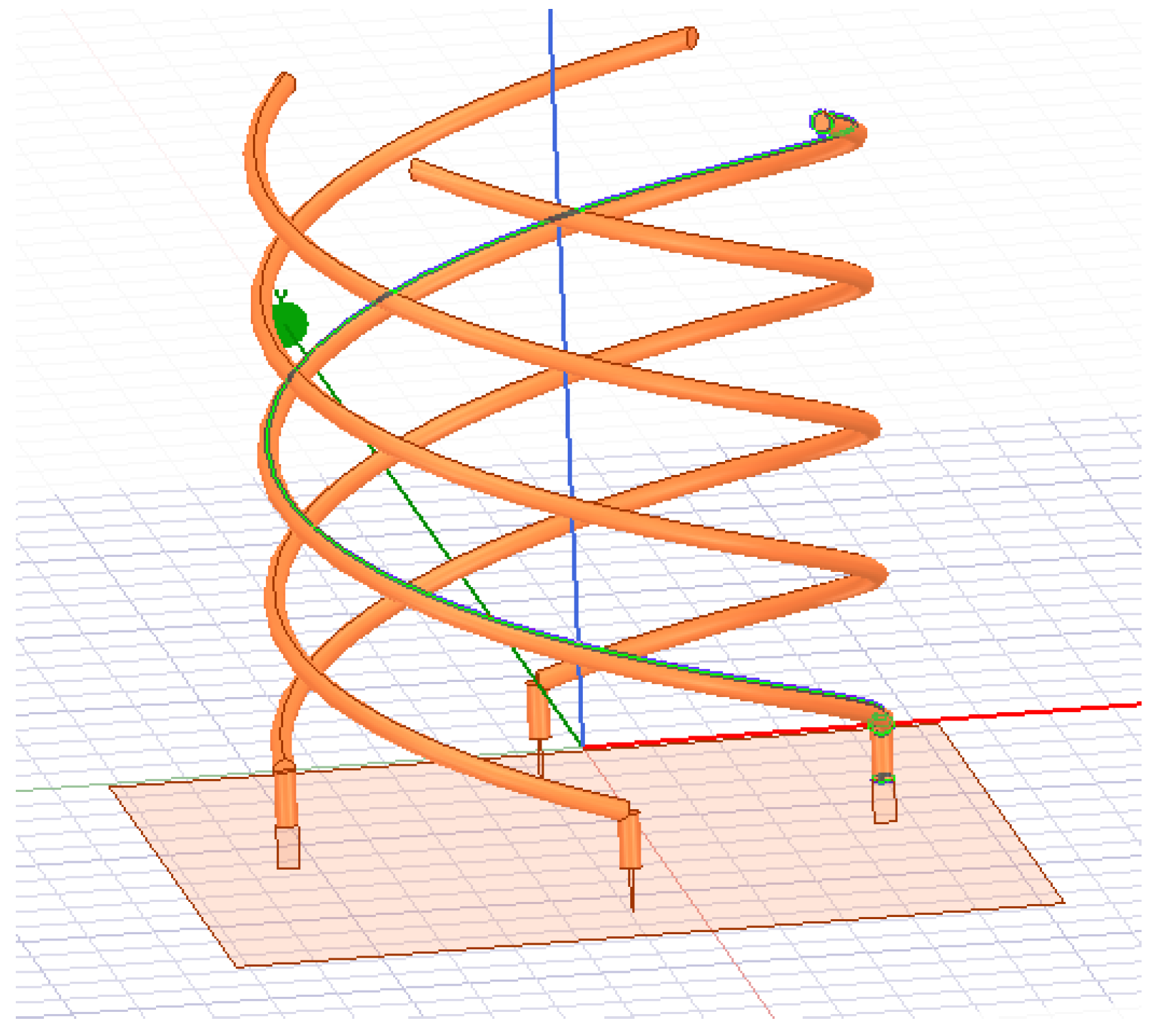
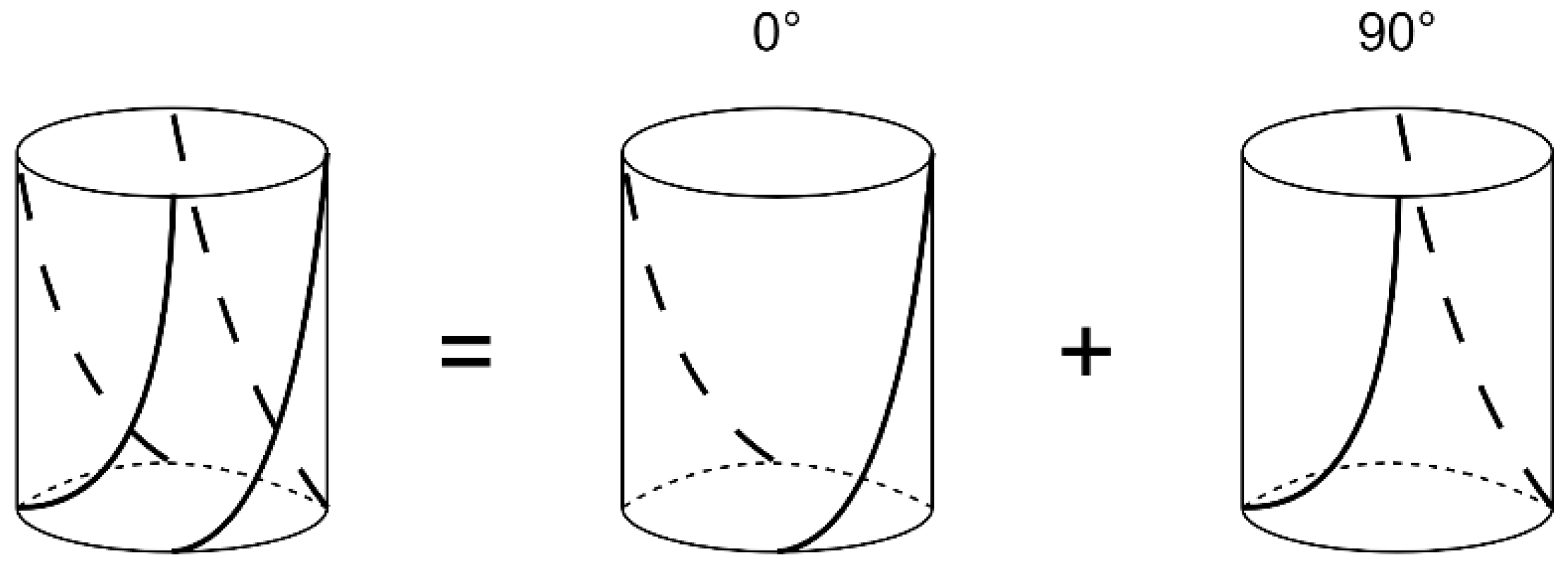
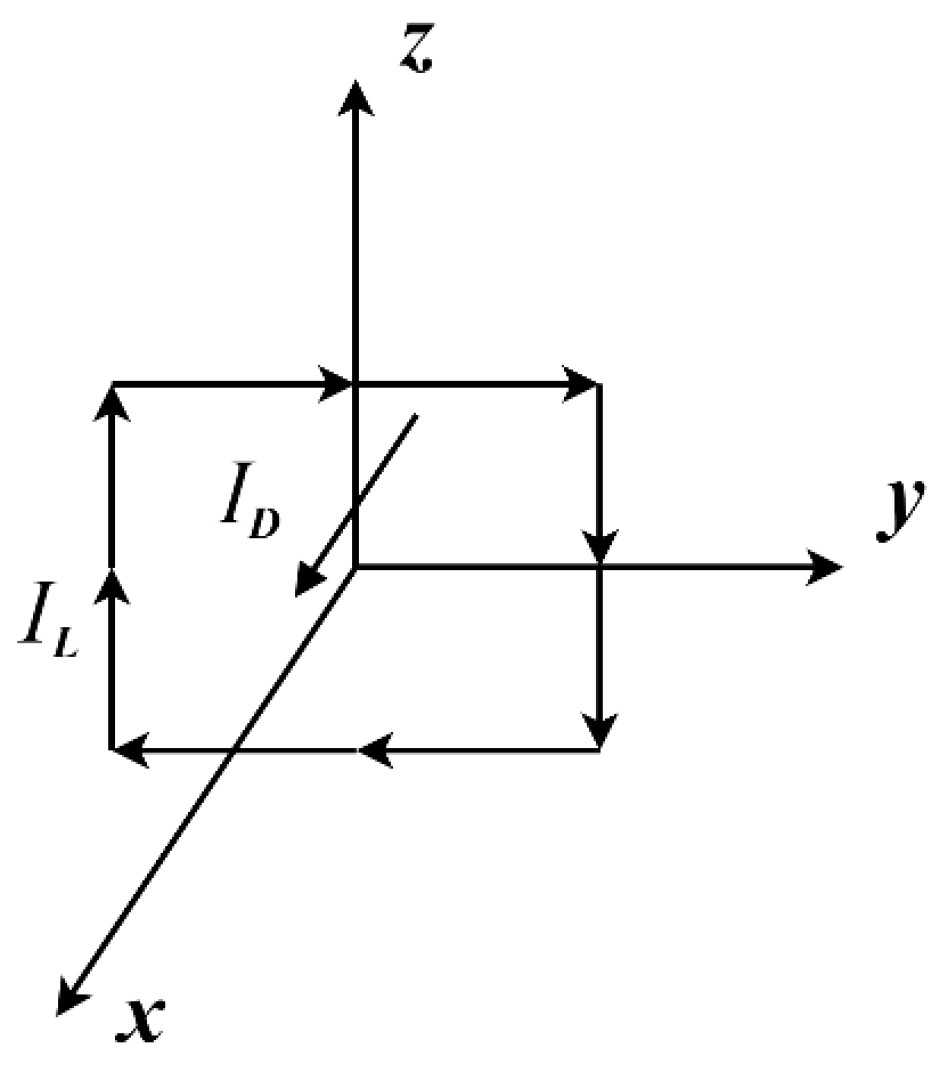
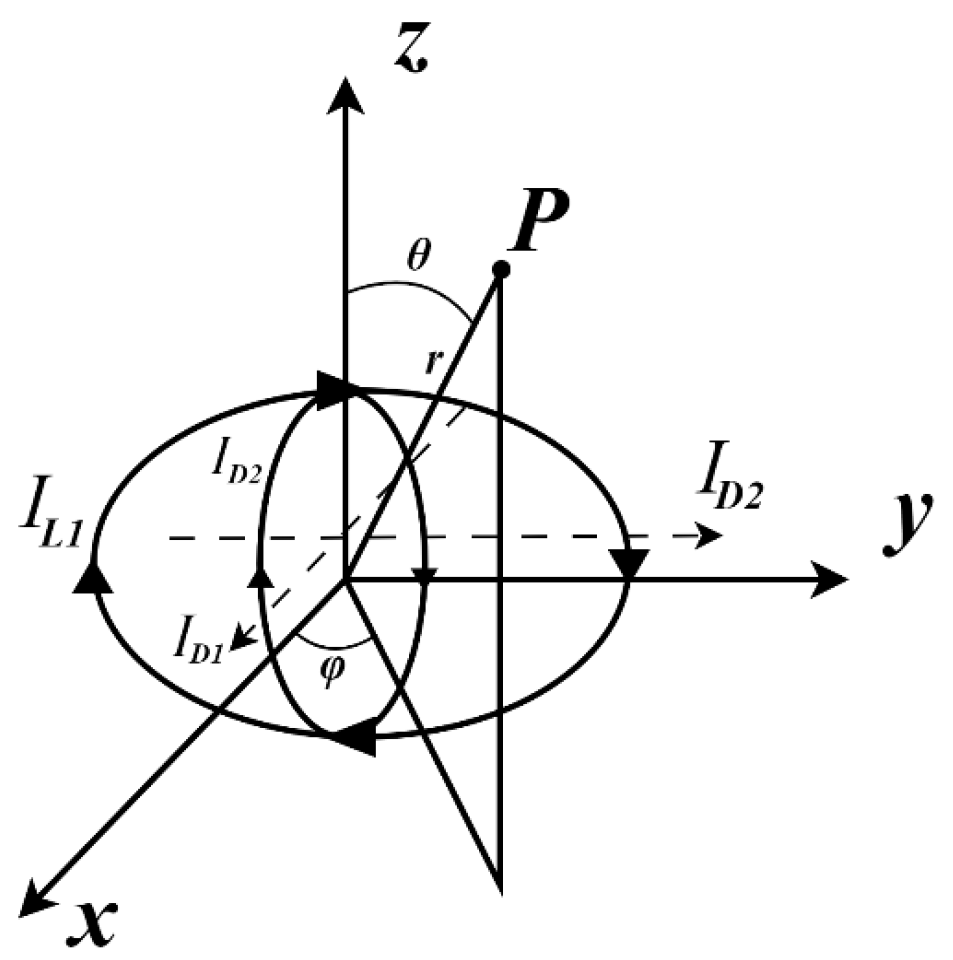
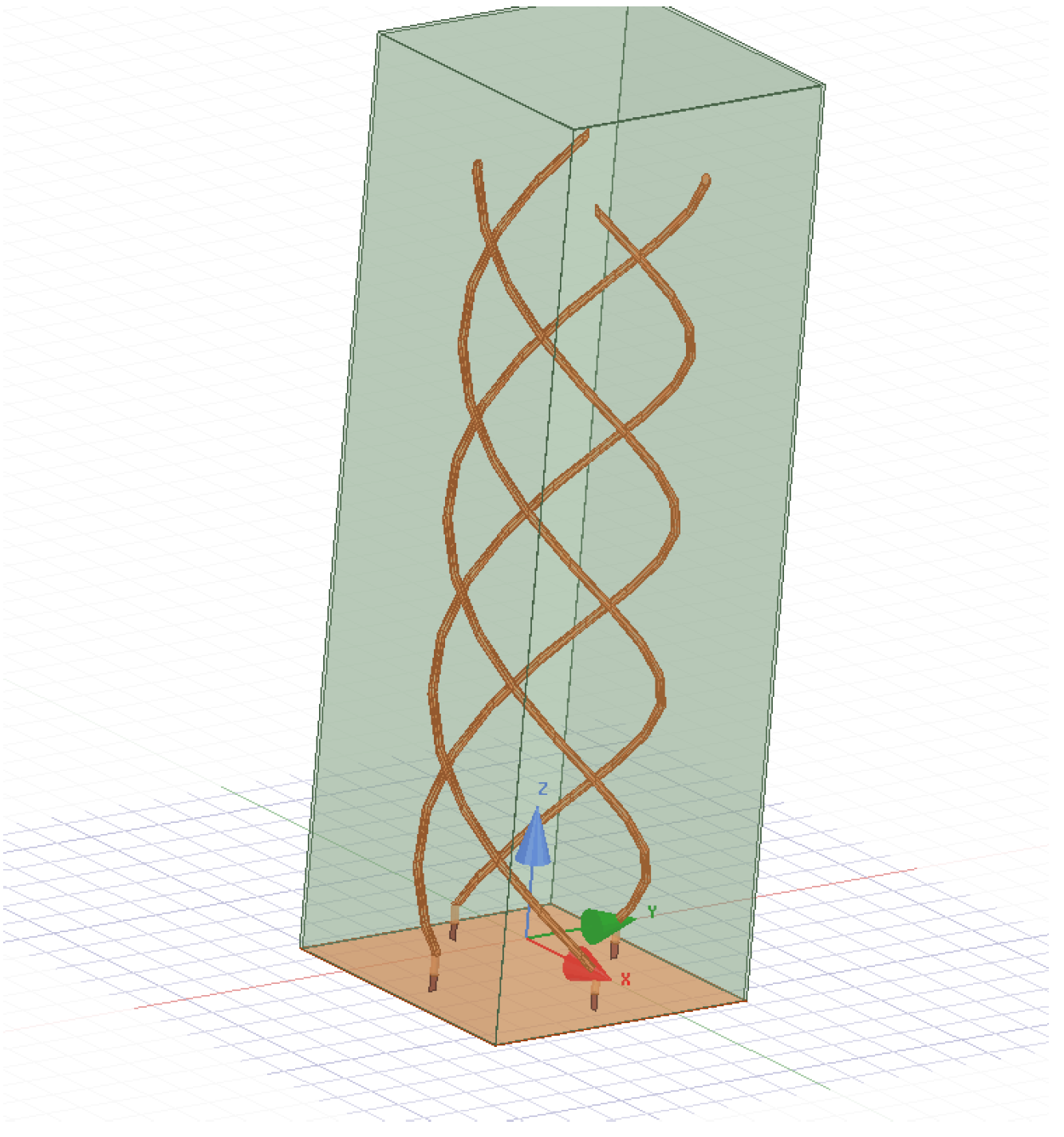

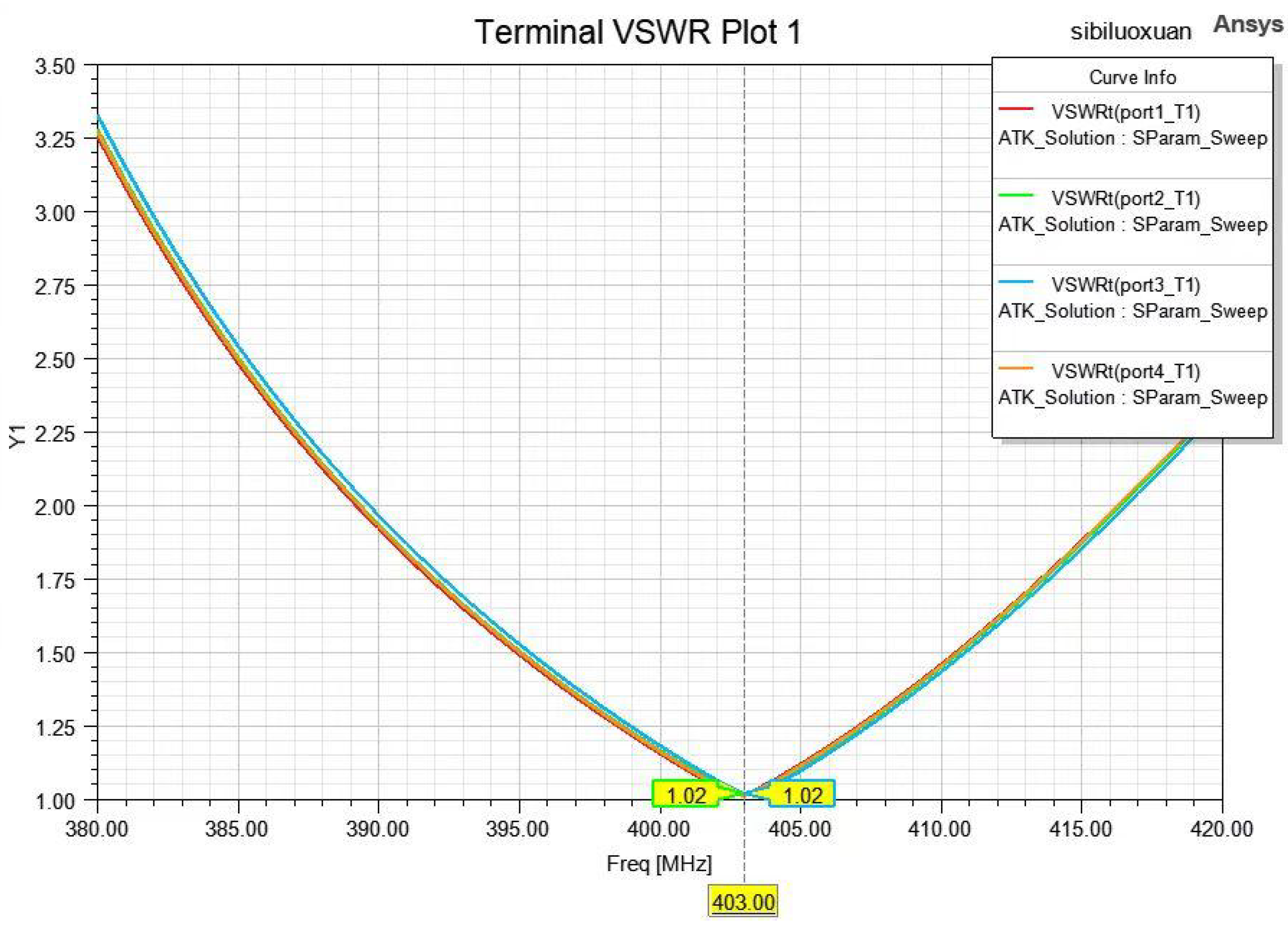

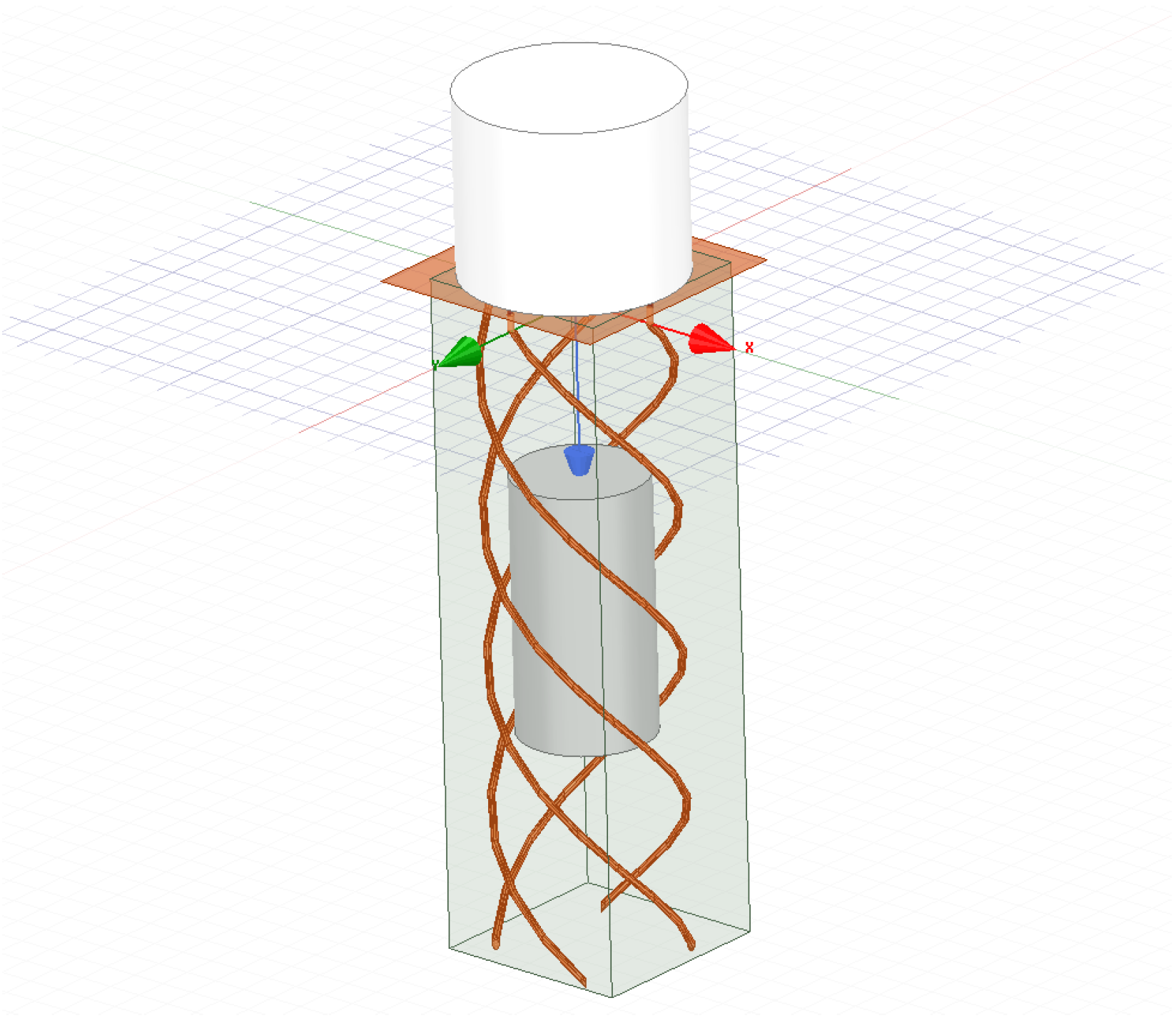

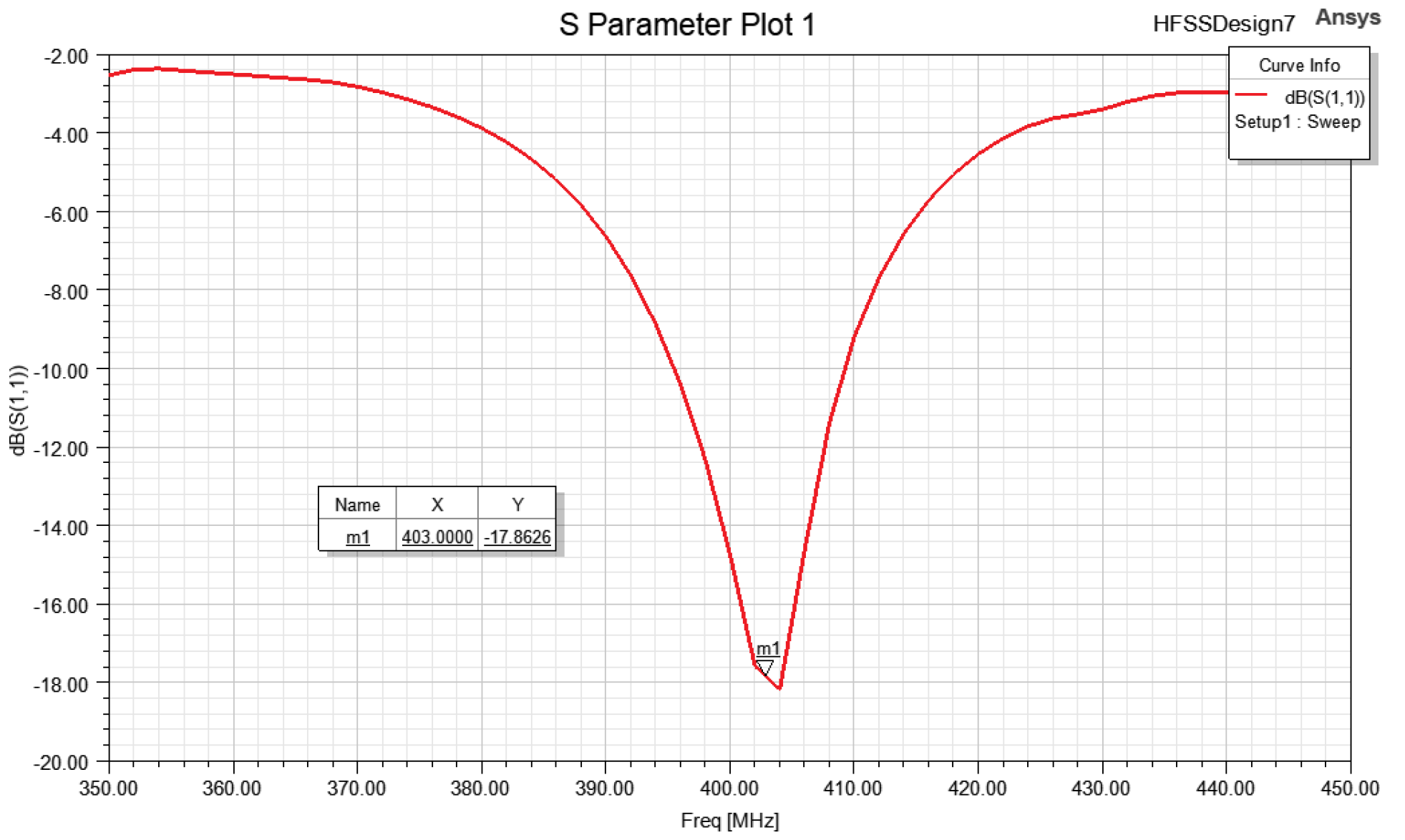

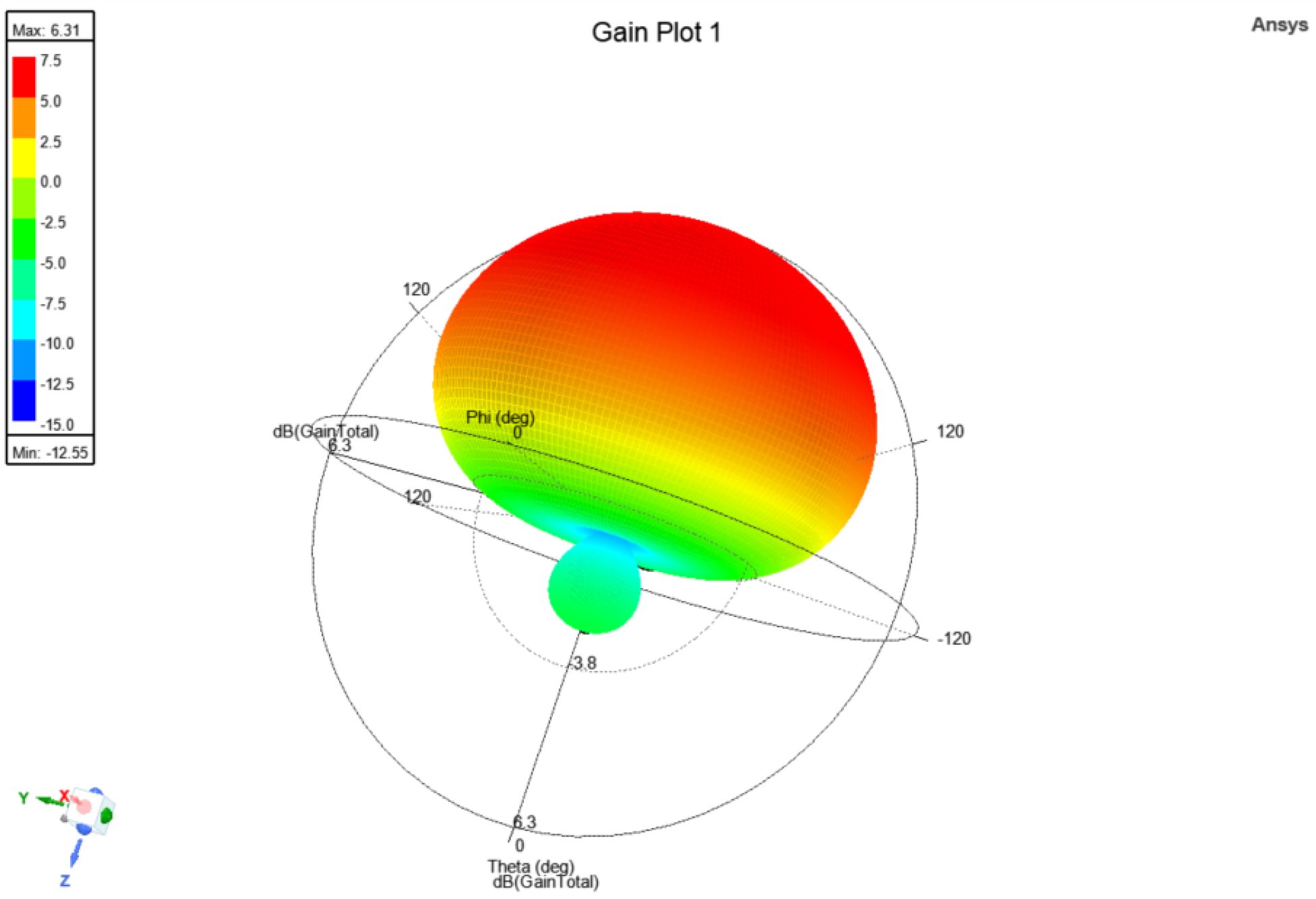

Disclaimer/Publisher’s Note: The statements, opinions and data contained in all publications are solely those of the individual author(s) and contributor(s) and not of MDPI and/or the editor(s). MDPI and/or the editor(s) disclaim responsibility for any injury to people or property resulting from any ideas, methods, instructions or products referred to in the content. |
© 2024 by the authors. Licensee MDPI, Basel, Switzerland. This article is an open access article distributed under the terms and conditions of the Creative Commons Attribution (CC BY) license (https://creativecommons.org/licenses/by/4.0/).
Share and Cite
Hong, T.; Lin, Z.; Li, Y.; Liu, T. Design of Typhoon Detection Downcast Device Based on Four-Arm Helical Antenna Structure. Appl. Sci. 2024, 14, 7956. https://doi.org/10.3390/app14177956
Hong T, Lin Z, Li Y, Liu T. Design of Typhoon Detection Downcast Device Based on Four-Arm Helical Antenna Structure. Applied Sciences. 2024; 14(17):7956. https://doi.org/10.3390/app14177956
Chicago/Turabian StyleHong, Tao, Zhiyan Lin, Yi Li, and Tong Liu. 2024. "Design of Typhoon Detection Downcast Device Based on Four-Arm Helical Antenna Structure" Applied Sciences 14, no. 17: 7956. https://doi.org/10.3390/app14177956




